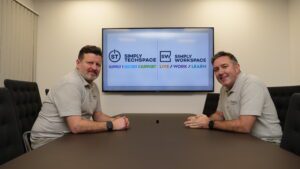In today’s economic landscape, where financial acumen plays a pivotal role in the sustainability and growth of any business, the importance of effectively managing business expenses cannot be overstated.
Recognising this critical need, Cottons Group has developed a valuable resource for business owners, shedding light on the strategies essential for optimising financial health and ensuring tax efficiency.
Introduction to business expenses
Both capital allowances and allowable expenses are deductions that businesses can claim to reduce their taxable profits. However, they apply to different types of spending.
Capital allowances offer a method for gaining tax relief on tangible capital expenditure, enabling it to be deducted from a company’s pre-tax income. This relief can be immediate or spread over several years, depending on the type of asset and applicable allowance. Typically, capital expenditure involves the acquisition of long-term business assets, such as machinery, business vehicles and equipment.
These allowances are determined based on assets deemed capital in nature, meaning they benefit the business over multiple years, rather than being consumed within the year of purchase.
While it’s noted that the tax advantage for these expenditures is often recognised over several years – particularly for assets falling into the main rate or special rate pool – it’s important to highlight that most assets may qualify for either the annual investment allowance (AIA) or first-year allowance (FYA).
These allowances allow for the tax benefit to be fully realised in the first year of purchase, providing significant tax relief upfront for qualifying expenditures.
According to HMRC, allowable expenses are costs incurred wholly, exclusively, and necessarily in the running of a business. These expenses can be deducted from a firm’s revenue to calculate its taxable profit. Essentially, for an expense to be allowable, it must be incurred in the direct course of the business operations.
Some of the common categories of allowable business expenses include:
- Office costs (such as stationery or phone bills)
- Travel (including fuel, parking, train and bus fares for business trips)
- Clothing (uniforms, protective workwear, etc.)
- Staffing costs (such as employee salaries or subcontractor wages)
- Items you buy to sell on (including stock or raw materials)
- Financial costs (including insurance or bank charges)
- Costs of your business premises (such as heating and lighting bills, and business rates)
- Advertising and marketing (such as website costs or marketing fees)
- Training courses (for improving skills or professional development).

Certain expenses require careful navigation due to their complex nature:
- Client entertainment: while business entertainment costs are not usually allowable expenses, understanding the specifics of these costs is essential for accurate reporting.
- Home office expenses: sole traders working from home can often claim a proportion of household expenses based on the portion of the home used for business purposes. For a limited company, these costs can only be recognised if they exceed what would otherwise have been incurred if the individual did not work from home. For example, if a sole trader believes 30% of their time using wifi is for work, they can include 30% of that cost. For a limited company, if that wifi cost is a fixed monthly fee, then HMRC would argue that cost would be the same whether there was some business use or not, and thus nothing can be claimed.
- Personal vehicle use: if you use a vehicle for both business and personal purposes, a proportion of the vehicle’s running costs can be claimed based on the percentage of business use. These costs are recognised through the business by using HMRC’s approved mileage rates.
It is important to note that staying compliant with HMRC’s guidelines is imperative. This involves keeping accurate records of all business expenses for at least six years, understanding the deadlines for tax returns, and being aware of the consequences of non-compliance.
Key differences to note include:
- Nature of expenditure: capital allowances are claimed on long-term assets, while allowable expenses are for day-to-day operational costs.
- Tax treatment: capital allowances are spread over the useful life of the asset, providing tax relief over several years while allowable expenses are deducted in the year they are incurred, providing immediate tax relief.
- Types of costs: examples of capital allowances include machinery while examples of allowable expenses include rent, salaries and utility bills.
Claiming capital allowances
To claim capital allowances, a business must first identify which assets qualify. Generally, the asset must be used for business purposes, and there are specific rules regarding what constitutes qualifying expenditure. Once identified, calculate the appropriate allowance using the relevant rates and include this in your business’s tax return.
It’s important to keep detailed records of the assets purchased, including invoices and dates of purchase, to support a claim.
Capital allowances can significantly reduce a company’s tax liability, making them a key consideration in financial and tax planning. Businesses should consider the timing of large purchases to maximise tax relief, especially in light of any changes to allowance rates or thresholds announced by the Government.
For more complex assets or situations, it might be beneficial to seek professional advice to ensure compliance with HMRC rules and to optimise the tax position.
Effective tracking and management of expenses
Accurate and efficient management of business expenses is non-negotiable. Leveraging technology through digital tools and accounting software can greatly enhance the precision and ease of tracking expenses.
Some key strategies to employ include:
- Implement expense management software: choose software that integrates well with current systems, offering real-time tracking, categorisation and receipt scanning capabilities.
- Regular reviews: conduct monthly or quarterly expense reviews to maintain accurate financial records and identify spending patterns. This aids in informed budgeting and cost management.
- Educate the team: ensure employees understand the difference between allowable expenses and capital expenditures. Provide clear reporting guidelines and emphasise the importance of accurate documentation to prevent reporting errors and compliance issues.
- Professional bookkeeping: consider hiring a bookkeeper to manage financial records, ensuring transactions are accurately recorded and tax-compliant.
- Maintain Receipts: keep all receipts and invoices, either physically or electronically, to support expense claims. Well-organised documentation simplifies tax filing and audits.
The bottom line
Expenses can sometimes feel mundane, but all you need to do is stay on top of them, and then leave the rest to the accountants. This simple step will not only save time and money in the long run but also ensure that financial matters are expertly handled.
The team at Cottons Group can help, using its expertise to help clients uncover opportunities to reduce costs, maximise tax benefits, and steer clear of common financial pitfalls.
Find out more at www.cottonsgroup.com














